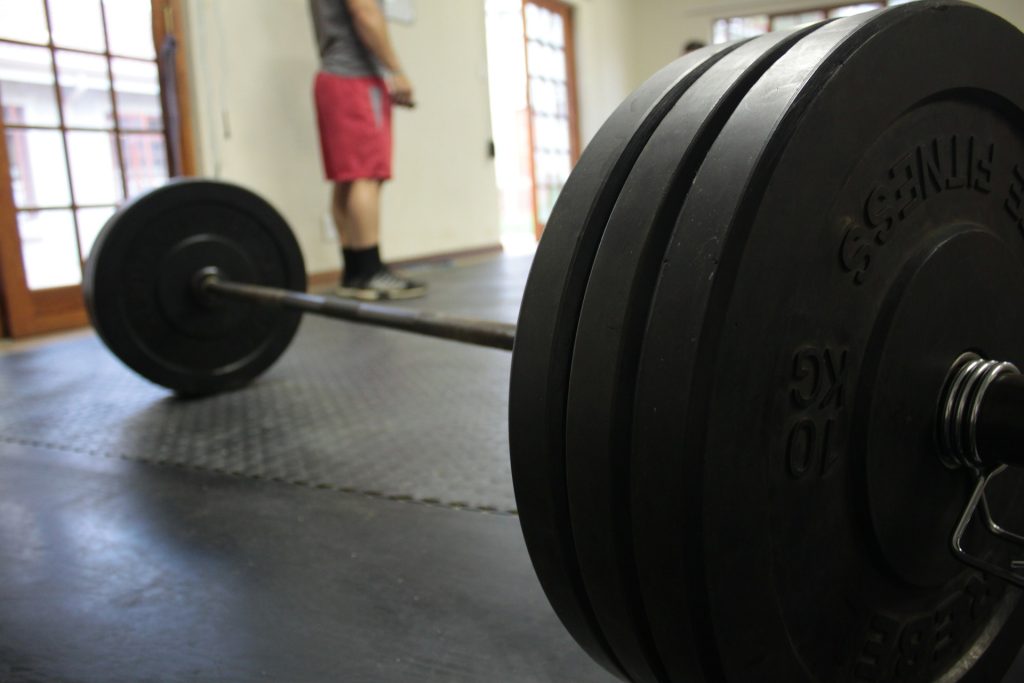The barbell deadlift: it works more major muscles than any other exercise.
It also makes me feel like passing out.
Whenever I complete a set of deadlifts, my head is swimming. I feel like I’ve just been clocked with a baseball bat (without the pain of impact). Sometimes, I feel the need to take a knee after a set for fear of falling over.
Why is this happening to me?
Well, the reason is that too much blood has rushed away from my brain. The exertion of all those major muscles used during a deadlift causes the blood to rush to those sites, leaving my brain with just barely enough to hang on.
Moving forward, I face a decision: either a) stop deadlifting, b) keep doing what I’m doing and take my chances, or c) figure out how to keep more oxygen on the brain while deadlifting.
Most of us employ a technique called the Valsalva method while weightlifting. You may not have heard of this method, but that doesn’t mean you’ve not been doing it. The Valsalva method helps to stabilize our core muscles while moving heavy weights. Some studies have suggested it gives a bit of a boost to moving weights, too.
Here’s a quick look at how it works:
- Begin my taking a deep breath, pulling oxygen into the belly.
- Hold the oxygen in through the initial push of your weight movement. It is recommended you close your glottis–the regulatory air opening in your throat between your vocal cords. You can aid this by pushing your tongue against the back of your throat.
- At the pivotal point of your lift, begin slowly pushing air out through the glottis.
- Keep slowly exhaling through the remainder of your rep.
Many of us do a technique like this intuitively. It helps to imagine trying to push a car out of the mud: how would you breath attempting to move such a large, resistance-heavy object? That’s the Valsalva method.
So if that’s the way to breath, then why am I feeling like I’m having an out-of-body experience when I do it with really heavy weight?
Well, the Valsalva method can play with a person’s blood pressure. Holding one’s breath causes blood pressure to rise. And a sudden release of breath, or sudden intake of fresh oxygen can cause blood pressure to rapidly sink and rise. Fluctuations in blood pressure make people dizzy.
Apparently, the trick is to keep an even-keeled blood pressure and oxygen on the brain. Here are some tips for regulating while lifting:
- Get more oxygen in before the lift. For deadlifting, that may mean inhaling before I go down to grab the bar.
- Breathe into the belly. Take a belly-full of air.
- Don’t hold onto the breath too long. We all do a little breathholding while moving high amounts of weight. Think of the last time you tried to move that stuck car–we often reflexively do some breath holding while pushing against immovable objects. The warning here is to be mindful of how long we’re holding the breath. If we’re struggling to get a weight up and it takes a long time, it may be time to move down on weight until we can move the weight in a more controlled and quick rep. (I think this is my issue. I want to lift like the big boys so I’m stacking on too much weight and taking too long to move it.)
- Don’t exhale too quickly. Is this counter-intuitive to what I just said about not holding your breath too long? Only slightly. You’ll want to exhale as part of your rep. Just exhale deliberately slow. Exhaling too quickly can result in such a rapid change in blood pressure that you black out. So exhale in a slow, controlled manner.
Go forth, breath easy, and be strong, friend!
Ryan Dunn has a bunch of certificates on his desk. A few are awards for content production and marketing. Ryan still seeks to achieve. He would like to be a faster runner and higher jumper. He wants to read more books while somehow watching all the Cubs games possible. He would like to produce more written words–though not in this bio.


